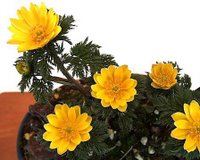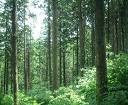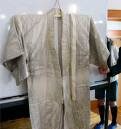::::::::::::::::::::::::::::::::::::::::::::::::::::::::::::::::::::::::::::::::::::::::::::::::::::
New Year Decorations (o-kazari)
***** Location: Japan
***** Season: New Year
***** Category: Humanity
*****************************
Explanation

DECORATIONS (kazari 飾)
in the home and garden
..... o-kazari お飾 (おかざり) New Year's decoration
..... wakazari, wa kazari 輪飾 (わかざり) straw wreath

daidai kazaru 橙飾る (だいだいかざる)
decoration with daidai oranges
..... 代々飾る(だいだいかざる)
It is the one on top of the mochi rice cakes
Daidai decorations

hoorai kazari 蓬莢飾(ほうらいかざり) Horai-decoration
hoorai 蓬莱 Buddhist mountain Horai in China, where people would live forever.
..... kake hoorai 懸蓬莢(かけほうらい)
..... tsutsumi hoorai 包蓬莢(つつみほうらい)
hoorai bon 蓬莢盆(ほうらいぼん)tray for the Horai decoration
Horaisan 蓬莱山, Horaijima 蓬莱島, a mythical mountain or island of eternal youth.
'Treasure Mountain' or 'Treasure Island'
© More in the WIKIPEDIA !
quote
Because in Hōrai there is no knowledge of great evil, the hearts of the people never grow old. And, by reason of being always young in heart, the people of Hōrai smile from birth until death, except when the Gods send sorrow among them; and faces are then veiled until the sorrow goes away.
All folk in Hōrai love and trust each other, as if all were members of a single household; and the speech of the women is like birds singing, because their hearts are as light as the souls of birds; and the swaying of the sleeves of the maidens at play seems like the fluttering of wide, soft wings.
In Hōrai nothing is hidden but grief, because there is no reason for shame; and nothing is locked away, because there could not be any theft; and by night as well as by day all doors remain unbarred, because there is no reason for fear.
And because the people are fairies, though mortal, all things in Hōrai, except the palace of the Dragon King, are small and quaint and strange; and these fairy-folk really do eat their rice out of very, very small bowls, and drink their wine out of very, very small cups.
- - - - - source : Lafcadio Hearn, Kwaidan
kachiguri kazaru 搗栗飾る (かちぐりかざる)
decoration with dried chestnuts
.......................................................................
kadomatsu 門松 (かどまつ) pines (decorations) at the gate
New Year Decoration
kado no matsu 門の松(かどのまつ)pines at the gate
kadoki 門木(かどき)、tawaramatsu 俵松(たわらまつ)、nageshimatsu 長押松(なげしまつ)、
kazarimatsu 飾松(かざりまつ)pine decorations
..... matsukazari 松飾(まつかざり)
..... tatematsu 立松(たてまつ)
kazaridake 飾竹(かざりだけ) bamboo decorations
kadomatsu put up at the End of the Year
- quote
Kadomatsu are placed in front of houses to welcome the New Year deity, purify the entrance and drive demons and evil spirits out.
Originally, they were made from evergreen woods such as pine, cedar, beech and sakaki. But the prevalence of the use of pine has led to their naming as 'kadomatsu' ('gate pine').
'Pine lasts for 1000 years and bamboo for 10,000 years' is an old Japanese proverb. Pine and bamboo are popular materials for kadomatsu because people wish that Yorishiro, the place in which the deity lives, will last forever.
According to custom, kadomatsu should not be set up on 31st December. This is because it is not faithful to have only one day before welcoming the deity on New Year's Day. Moreover, the 29th should also be avoided because 'nine matsu' is the same pronunciation as 'wait for pain'. Usually, kadomatsu are set up by the 28th.
- source : nippon-kichi.jp
. toshitokujin 歳德神 the New Year Deity .
Why is the bamboo (take) of the kadomatsu (matsu) cut slant?

The story goes back to the two famous warlords, Matsudaira (later Tokugawa Ieyasu) and Takeda Shingen, the matsu and take rivals.
At the battle of Mikatagahara in 1573, Takeda defeated Matsudaira, who had to run away in a humiliating retreat to survive. He was so angry at his adversary, that at the new year he cut the bamboo of the New Year decoration in a way he would cut the head off his adversary. As time passed, Matsudaira won more battles, changed his name to Tokugawa and eventually became the first Shogun of the Tokugawa Bakufu government.
.......................................................................
kaya kazaru 榧飾る (かやかざる)
decoration with kaya reeds

kazariebi 飾海老 (かざりえび)
decoration with lobsters
ebi kazaru 海老飾る(えびかざる)、Iseebi kazaru 伊勢海老飾る(いせえびかざる)、Kamakuraebi kazaru 鎌倉海老飾る(かまくらえびかざる)
Live lobsters or ornaments made from paper or string are used.
Washoku : Ebi 海老 Lobster Kigo
kazarigome 飾米 (かざりごめ) decoration with rice

kazariusu, kazari-usu 飾臼 (かざりうす)
dedoration for the mortar
usu kazaru 臼飾る(うすかざる)
The wooden mortar for pounding glutionous rice for mochi is honored.
. usu 臼 different types of mortars, grinders and handmills .
kazarizumi 飾炭 (かざりずみ) decoration with coal
yuizumi 結炭(ゆいずみ)
for the tea ceremony
. . . CLICK here for Photos !
konbu kazaru 昆布飾る (こんぶかざる)
decoration with kombu seaweed
kazarikonbu 飾昆布(かざりこんぶ)、musubi konbu iwau 結び昆布祝う(むすびこんぶいわう)、musubi kobu iwau 結びこぶ祝う(むすびこぶいわう)
KOBU, yorokobu, is a play on words with "happiness" and "good luck".
kushigaki kazaru 串柿飾る (くしがきかざる)
decoration with persimmons on skewers
korogaki kazaru 胡蘆柿飾る(ころがきかざる)
kushigaki 串柿 ( くしがき) dried persimmons on a stick
from Wakayama

saiwaigi 幸木 (さいわいぎ) "lucky pole"
..... saigi (さいぎ)
..... yorozukake 万懸け(よろずかけ)
kake no uo 懸の魚(かけのうお)fish hung on the lucky pole
juuni setsu 十二節(じゅうにせつ)12th seasonal section
A pole hung in the garden, decorated with fish, radish and other food items as offerings to the deities.
Shimenawa 注連縄 Sacred rope decorations

shoochikubai kazaru 松竹梅飾る (しょうちくばいかざる)
decoration of pine, bamboo and plum
They are the "three friends of winter" from ancient China.
Sho-chiku-bai, Shochikubai
. . . CLICK here for Photos !
. WKD : Sho Chiku Bai and the Pine tree
tokoro kazaru 野老飾る (ところかざる)
decoration with tokoro sweet potatoes or yams
WASHOKU : tororo potato, yama-imo, Dioscorea opposita and tokoro potato
umeboshi kazaru 梅干飾る (うめぼしかざる)
decoration with dried salted plums
WASHOKU : Dried salted plums (umeboshi)
wara gooshi, waragooshi 藁盒子 (わらごうし)
small straw container with a lid
and other straw decorations

yuzu kazaru 柚子飾る(ゆずかざる)
decoration with yuzu citrons
tachibana kazaru 橘飾る (たちばなかざる), kooji kazaru 柑子飾る(こうじかざる)、yukoo kazaru 柚柑飾る(ゆこうかざる)、mikan kazaru 蜜柑飾る(みかんかざる)decoration with mikan , yabukooji kazaru 藪柑子飾る(やぶこうじかざる)decoration with spearflowers
WASHOKU : yuzu citrons
tachibana is an old name for the mikan. The first mikan tree is said to be in the temple Tachibanadera 橘寺 in Asuka, Nara.
. WASHOKU
Tachibana tree in Asuka
:::::::::::::::::::::::::::::::::::::::::::::::::::::::::::::::::::::::::::::::::::::::::::::::::::::
Last day of the decorations,
packing them away or burning them after use
kazari osame 飾納 (かざりおさめ)
packing away the decorations
shimenawa toru 注連飾取る(しめかざりとる)taking down the sacred ropes
..... shime toru 注連取る(しめとる)、kazari toru 飾取る(かざりとる)
kazari oroshi 飾卸し(かざりおろし)
o-kazari kowashi お飾こわし(おかざりこわし)

matsu osame 松納 (まつおさめ)
last day of the kadomatsu decorations
matsu agari 松上り(まつあがり), matsu taoshi 松倒し(まつたおし)、matsu oroshi 松下し(まつおろし)、matsu okuri 松送り(まつおくり)、matsuhiki 松引(まつひき)
matsu naoshi 松直し(まつなおし)、omatsu harai お松払い(おまつはらい)、
matsu toru 松取る(まつとる)、katomatsu toru 門松取る(かどまつとる)
toshi oroshi 年卸 (としおろし)
taking down the food offerings
A custom in Kansai
tana ori 棚下り(たなおり)、tana oroshi 棚下し(たなおろし)、tana sagashi 棚探し(たなさがし)、tanamoto sagashi 棚元探し(たなもとさがし)
tana sarai 棚さらい(たなさらい)、toshioke oroshi 年桶おろし(としおけおろし)
tobusa matsu, tobusamatsu 鳥総松 (とぶさまつ)
"branch offering"
sticking one branch of the old kadomatsu into the place until next year
..... rusui matsu 留守居松(るすいまつ)
Sometimes it starts to take root and its branches can be used for years to make new decorations.
*****************************
Worldwide use
*****************************
Things found on the way
*****************************
HAIKU

蓬莱に聞かばや伊勢の初便り
hoorai ni kikabaya Ise no hatsudayori
decorations of the immortals:
I'l love to hear from Ise
the first news of the year
Tr. Barnhill
HōraiDecoration !
I should like to hear from Ise
The year's first good news.
Tr. Oseko
Written on the first day of 1694 元禄7年元旦
This was most probably the New Year greeting poem to be published soon.
1694 is the last year in the life of Basho, he died in winter of this year.
In his wandering mind, he envisaged an auspicious trip to Ise.
Visiting the Grand Shrin at Ise
. Matsuo Basho 松尾芭蕉 - Archives of the WKD .
:::::::::::::::::::::::::::::::::::::::::::::::::::::::::::::::::::::::::::::::::::::::::::::::::::::::
Kobayashi Issa and the Hoorai decorations
Tr. David Lanoue
蓬莱に夜が明込ぞ角田川
hôrai ni yo ga akekome zo Sumida-gawa
day breaks
over the eternal youth ornament...
Sumida River
Hôrai (hoorai) is a mythical island of eternal youth.
On New Year's Day offerings are set on a special table in its honor.
WKD : River Sumidagawa
蓬莱や只三文の御代の松
hoorai ya tada sammon no miyo no matsu
my eternal youth ornament--
just three cents
of emporer's pine
Literally, miyo no matsu signifies "reign's pine."
Issa is referring to a rather cheap pine decoration on the table in honor of the new imperial year.
. WKD : Kobayashi Issa 小林一茶 .
*****************************
Related words
observance kigo for mid-winter
kazariuri, kazari uri 飾売 かざりうり
vendor of New Year decorations
They used to come to the Year End Markets or nowadays stand aroung big train stations.
行く人の後ろ見送り飾売
yuku hito no ushiro mi-okuri kazari uri
they look at the back
of people passing by -
decoration vendors
Takahama Kyoshi 高浜虚子
.................................................................................
observance kigo for late winter
yukiyama 雪山 (ゆきやま) "snow mountain"
..... yuki no yama 雪の山(ゆきのやま)
At court and in the garden of rich people, they make a mountain of snow in imitation of Mount Horai. If there was not enough snow, they would go borrow more from the temples in the neighbourhood.
This custom has been made into a poem already in the Makura Soshi collection.
::::::::::::::::::::::::::::::::::::::::::::::::::::::::::::::::::::::::::::::::::::::::::::::::::::
***** . NEW YEAR
KIGO for HUMANITY
***** . New Year is over
... burning the ritual offerings
***** . WASHOKU
Citrus fruits (kankitsu rui)
Shrine Saijo Inari on January 1, 2008
Take a look at my visit.
. WASHOKU
New Year Food and Decorations
. SAIJIKI - THE NEW YEAR
:::::::::::::::::::::::::::::::::::::::::::::::::::::::::::::::::::::::::::::::::::::::::::::::::::











































